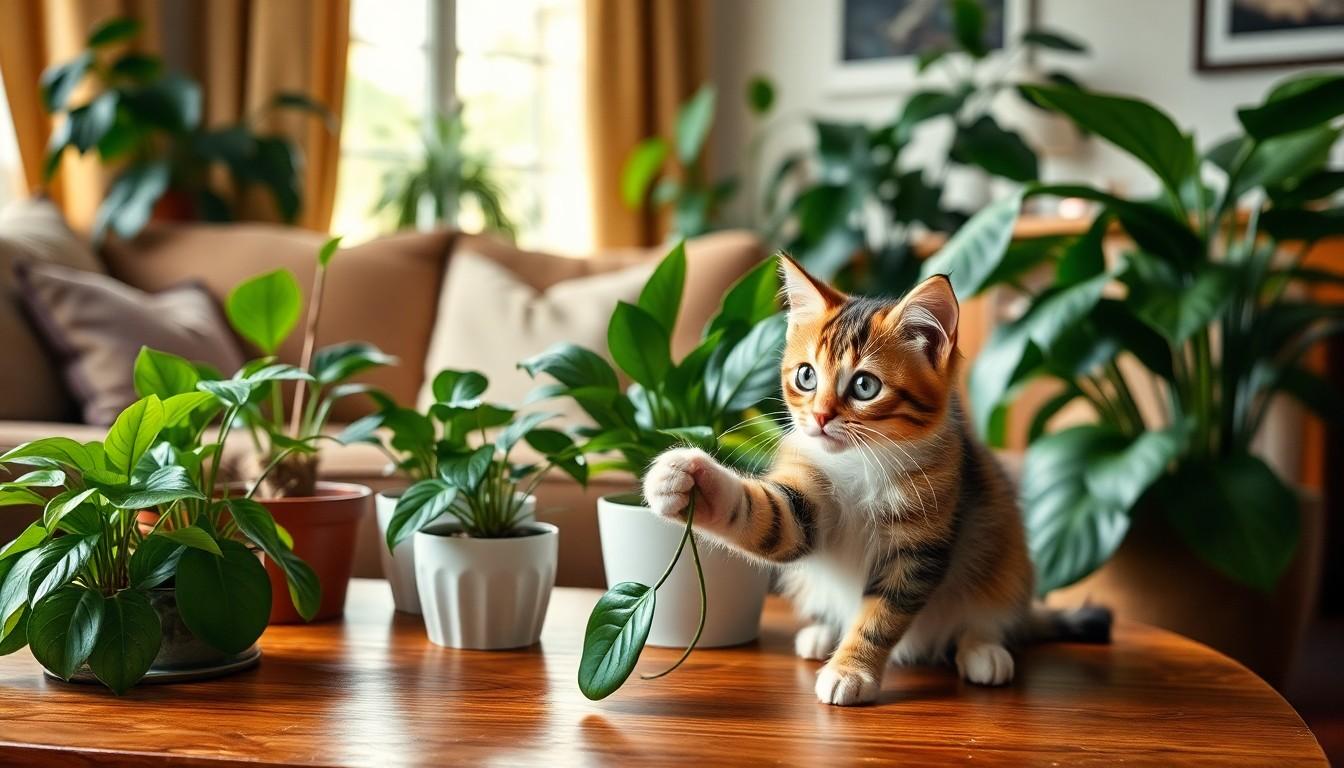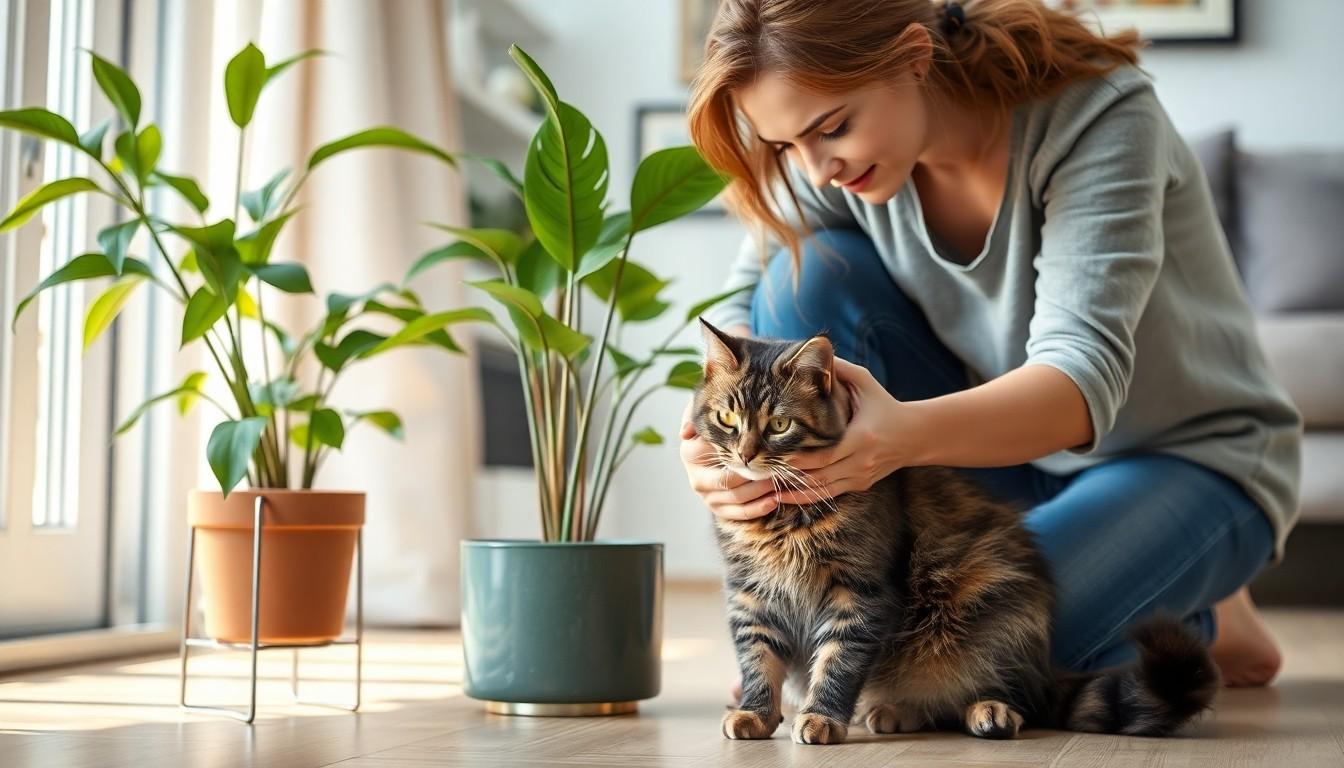The Best Fluffy Pancakes recipe you will fall in love with. Full of tips and tricks to help you make the best pancakes.

Common House Plants Toxic to Cats: 10 Plants You Must Remove Now
Cats are curious creatures, often treating houseplants like a buffet of leafy delights. Unfortunately, not all greenery is safe for their playful paws. While your feline friend might find joy in nibbling on that lush pothos or vibrant peace lily, these plants can pack a toxic punch.
Overview of Common House Plants Toxic to Cats
Many houseplants pose risks for cats. Pothos, known for its attractive trailing vines, contains insoluble calcium oxalates. Cats ingesting pothos can experience irritation in their mouths and throats, leading to vomiting and difficulty swallowing.
Another plant to avoid is the peace lily. Although visually appealing, this plant also contains calcium oxalates. When a cat chews on peace lilies, it may face similar issues, including swelling and pain in the oral cavity.
Lilies, particularly the Easter and Stargazer varieties, are highly toxic to cats. Even small amounts can cause severe kidney damage. Symptoms of lily toxicity include vomiting, lethargy, and loss of appetite.
Sago palms should remain out of reach. This popular houseplant is extremely toxic due to its cycasin content, which can lead to liver failure. Symptoms of sago palm ingestion include vomiting, diarrhea, and abdominal pain.
Additionally, philodendrons rank high on the list of toxic plants. Their leaves contain calcium oxalates, which may lead to gastrointestinal distress. Signs include oral irritation, difficulty swallowing, and excessive drooling.
Fiddle leaf figs are another potentially harmful option. If a cat consumes any part of this plant, it can result in mild to moderate gastrointestinal upset. Symptoms often manifest as vomiting or diarrhea.
Be vigilant about these plants if cats share space with houseplants. Identifying and removing toxic species helps ensure a safe environment for feline companions.
Understanding Plant Toxicity in Cats

Plant toxicity can significantly impact a cat’s health. Recognizing the signs and knowing the immediate actions to take are crucial for a timely response.
Signs of Poisoning in Cats
Common symptoms of poisoning in cats include vomiting, diarrhea, and lethargy. Cats may also exhibit drooling or refusal to eat. If a cat shows signs of agitation or tremors, these could indicate severe reactions. Additional signs like difficulty breathing or swelling of the mouth may arise in more serious cases. Observing any of these symptoms requires prompt attention to avoid complications.
Immediate Actions to Take
Taking immediate action can save a cat’s life. First, isolate the plant and remove it from the cat’s environment. Next, contact a veterinarian for guidance on further steps. Providing the veterinarian with information about the plant type and symptoms helps facilitate effective treatment. In case of severe symptoms, consider taking the cat to an emergency animal clinic quickly. Monitoring the cat’s behavior until help arrives can aid in assessing the severity of the situation.
Common House Plants That Are Toxic
Certain houseplants pose significant risks to cats. Identifying these plants can help maintain a safe environment for furry companions.
List of Toxic Plants
- Pothos: Causes mouth and throat irritation.
- Peace Lily: Leads to swelling and pain in the mouth.
- Easter Lily: Results in severe kidney damage.
- Stargazer Lily: Known for causing kidney failure symptoms.
- Sago Palm: Linked to liver failure in cats.
- Philodendron: Results in gastrointestinal issues.
- Fiddle Leaf Fig: Induces gastrointestinal distress.
Symptoms Related to Specific Plants
Symptoms vary by plant exposure. Notable signs of toxicity include vomiting after ingesting pothos. Swelling and drooling often accompany peace lily exposure. Severe kidney damage may arise after ingesting Easter or Stargazer lilies. Sago palm exposure can cause lethargy, vomiting, or diarrhea. Gastrointestinal distress, such as vomiting and diarrhea, typically follows ingestion of philodendron or fiddle leaf fig foliage. Immediate veterinary consultation remains crucial upon observing these symptoms.
Safe Alternatives for Cat Owners
Choosing cat-friendly houseplants enhances pet safety while maintaining a beautiful home. Several options provide greenery without risk.
Cat-Friendly House Plants
Spider plants, Boston ferns, and bamboo palms thrive indoors and don’t pose toxicity to cats. They enjoy filtering indoor air and add a vibrant touch. Barley grass and catnip cater to curious felines, offering safe options for play and nibbling. Moreover, rosemary and thyme enhance culinary experiences without danger to pets. When selecting plants, consider their light and watering needs to ensure they flourish while keeping cats safe.
Tips for Creating a Safe Environment
Arranging plants out of pet reach proves beneficial. Utilize hanging pots or high shelves to deter curious paws. Regularly check for fallen leaves or debris to prevent ingestion. Cat owners should also establish a designated area for pets with safe toys. Opt for non-toxic sprays or natural deterrents to discourage unwanted chewing. Observations on plant interactions can help recognize safety concerns early. With these precautions, maintaining a beautiful, cat-friendly home becomes a simple task.
Conclusion
Ensuring a safe environment for cats involves understanding the risks associated with common houseplants. Many plants that may seem harmless can pose serious health threats to feline companions. By identifying toxic varieties and taking proactive measures, cat owners can protect their pets from potential harm.
Incorporating non-toxic plants into the home not only enhances the living space but also provides a safe haven for curious cats. Regularly monitoring plants and keeping them out of reach can help prevent accidental ingestion. With careful planning and awareness, it’s possible to enjoy the beauty of houseplants while keeping furry friends safe and healthy.
